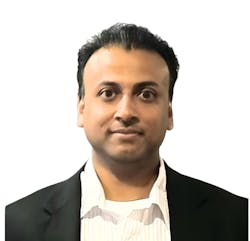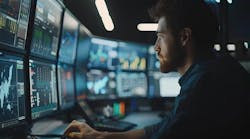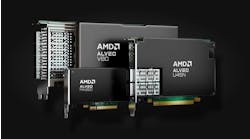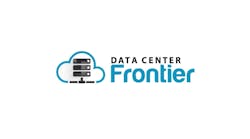Supplying Clean Power: Utilities and Power Grids
According to the International Energy Agency, data centers currently consume between 1% and 1.4% of the world’s electricity, making data centers an important component in the migration to cleaner, carbon-free energy.
However, even in cases where the utility is moving aggressively to cleaner energy, there can be challenges in accessing and distributing those power sources.
So far, in 2023, California has seen 56.4 feet of snow, the second-snowiest year on record. Including the heavy rains the state has experienced, 2023 already ranks among the wettest on record. Why is this relevant to a discussion of data centers and clean energy? Until 2023, California was under drought conditions, quite severe in some places. And that meant the state’s ability to generate hydroelectric power was declining year over year.
2023 changes that trend. The state forecasts an increase of as much as 72% in hydroelectric power in 2023.
Still, it’s clear that no matter how many dams are constructed or where they are located, hydroelectric power still requires adequate rainfall and snowfall. In their own ways, wind and solar can encounter similar challenges due to when the sun shines or the wind blows is not highly predictable. The environment doesn’t always provide resources exactly where and when utilities and data center providers might like.
However, it’s essential to recognize that major electricity suppliers are putting significant efforts into sourcing and delivering renewable and zero-carbon power to customers in diverse markets. And they are making progress.
To cite some recent examples, below are some trends in renewable and carbon-free energy distribution:
- In Texas, between 2015 and 2022, carbon-based energy declined from generating 76% of the state’s power to 60%. And carbon-free energy’s contribution rose from 24% to 40%.
- In California, over the same period, renewables rose from 25% of the state’s energy sources to 37%. Energy analysts note that 2023 is on track for more hydroelectricity and increased renewables.
- In Europe, the picture is encouraging but complex. Carbon-based coal and gas declined in 2022, renewables and carbon-free sources grew to 55%, with solar and wind growing most rapidly.
Now, while this isn’t an exhaustive report on the progress of grids worldwide, general trends point to zero-carbon sources contributing to more electrical power in global markets. So, for our purposes, the question becomes: How does all of this information factor into the goal of a carbon-free future for data centers? One approach that diversifies the use of clean energy sources is 24/7 time matching Carbon-Free Energy (CFE).
The 24/7 Carbon-Free Time Matching Energy Approach
24/7 Carbon-free Time Matching Energy (CFE) emerged as a response to the urgent need for the elimination of carbon emissions and the adoption of cleaner energy sources to address climate change. In 2021, the 24/7 Carbon-free Energy Compact, developed in partnership with the United Nations, was published and signed by many major energy buyers, governments, solution providers, investors, and other organizations. The definition of 24/7 CFE is simple: every kWh of electricity consumption is fulfilled by carbon-free electricity generation and measured hourly or in even smaller time increments.
The United Nation’s 2030 goal is to cut CO2 emissions by 50% from the 2010 levels and achieve net-zero emissions economies by 2050.
24/7 CFE can drive reduced consumption of carbon-based energy and can be applied to both new and existing data centers. For older, less efficient facilities, 24/7 CFE enables them to take better advantage of cleaner energy, reducing their carbon footprint without requiring new construction by reducing the local use of fossil fuels and delivering electrical power generated with wind, solar, hydro, or other available combinations of renewable and carbon-free sources. The same can be said for newer facilities. When you match energy consumption with clean energy in hourly or smaller increments, you're increasing efficiencies for your data center and reducing energy demand from local power plants that rely on fossil fuels.
Real-World 24/7 CFE Success
EdgeConneX established a multi-year 24/7 CFE time matching program at one of its U.S. data centers, with an eye to scale this effort to other facilities within its global fleet. More details on this successful initiative may be found in the white paper developed jointly by EdgeConneX and Gridmatic on the EdgeConneX Sustainability web page.
Some guidelines and metrics we found that can help ensure a successful 24/7 CFE deployments include:
- Targets: Set targets for the minimum acceptable mix of renewable and carbon-free electricity. An example might identify a baseline of 60% CFE time matching with a stretch goal of 75%
- Costs: Negotiate power costs upfront with providers, but note that prices will vary from market to market
- Reporting: Define timely, auditable reporting that shows the share of renewable energy consumed in hourly increments to hold suppliers accountable
- Select Facilities: Choose a facility capable of monitoring and measuring power loads and grid mix in real time
- Utility History: Determine whether your utility can provide historical data for up to a year, allowing you to refine modeling predictions
Another benefit of the 24/7 CFE time matching approach is that power may be provided from virtually any carbon-free source, so utilities are not dependent on a single source like solar or hydro. Any plentiful CFE sources can meet the goals of this approach. Based on the success of this project, EdgeConneX is integrating similar programs with various partners across our data centers globally. This 24/7 CFE program is one of many technologies and considerations that EdgeConneX incorporated into our comprehensive sustainability strategy.
Silving Lining
Because of the pivotal role they play in the world’s digital infrastructure, and given the explosive pace of innovation in content, cloud, and now AI and other emerging technology services, we can expect data center capacities to continue to increase for decades to come.
What we know from the past 20 years is that data center computing and storage have grown much faster than data center energy consumption. This divergence is due to an industry-wide emphasis on efficiency and optimization in every aspect of data center construction and operation.
Artificial Intelligence (“AI”) will demand even more capacity, storage, computing power, and data centers. It’s important to note that AI is also helping to deliver 24/7 CFE deployments. And AI promises to help improve data center design, construction, and operations, enabling data centers to increase performance and capacity while optimizing energy consumption and impacts to our environment.
The silver lining in California's recent cloud-filled skies is the resurgence of hydroelectric power, which is an unexpected but significant step forward in our clean energy journey. The surge in water-driven power has the potential to fuel countless data centers, bolstering digital infrastructure while reducing carbon footprints. You could say, nature’s unpredictability underscores the need for diverse, resilient, and adaptable energy solutions.
Data centers are already playing a role in identifying, piloting, and rolling out carbon-free solutions that other industries will be able to adopt. We are an industry committed to developing more intelligent, cleaner solutions to point the way to a carbon-free future.
Raj Chudgar is Chief Power Officer at EdgeConneX. Backed by EQT Infrastructure, part of the global investment organization EQT, EdgeConneX provides a full range of sustainable data center solutions worldwide. Contact EdgeConneX to learn how they work closely with their customers to offer choices in location, scale, and type of facility, from Hyperlocal to Hyperscale.






